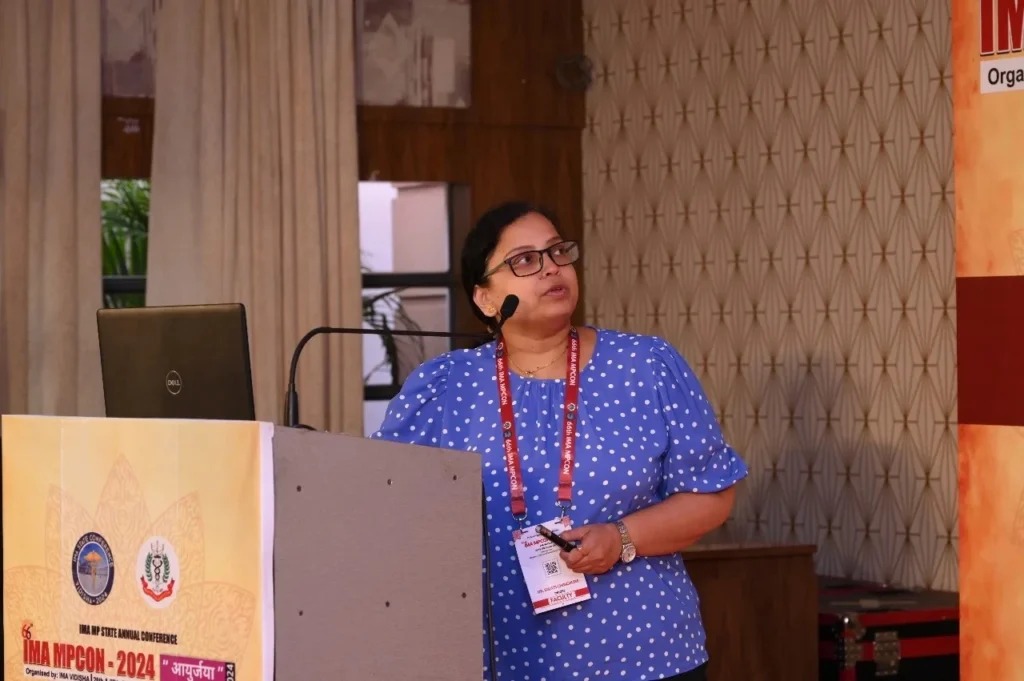About Us
Dr. Swati Chinchure
Neuro And Spinal Interventions
Dr Swati Chinchure has done DM in Neurointervention and Neuroradiology from Sree Chitra Tirunal Institute for Medical Sciences and Technology, Trivandrum (Kerala). She has introduced complete spectrum of neurointerventional services like acute stroke neurointervention (mechanical thrombectomy), aneurysm coiling (balloon and stent assisted), flow diverter placement, intracranial stenting for atherosclerotic disease in Central India. She has rich experience in neurointervention surgery.
Experience 10 Years Experience Neuro And Spinal Interventions
Education Qualifications
- MBBS- 1996-2001 Govt Medical Collage, Nanded. MS.
- DMRD-2004-2006 Indira Gandhi Govt Medical Collage, Nagpur. MS
- DNB- 2006-2008 Yashoda Hospitals, Hyderabad.
- DM Neuroradiology- 2009-2011 Sree Chitra Tirunal Institute, Trivandrum Kerala
- FNVIR 2012-2013 fellowship in Neurointerventions
Education Qualifications
- MBBS- 1996-2001 Govt Medical Collage, Nanded. MS.
- DMRD-2004-2006 Indira Gandhi Govt Medical Collage, Nagpur. MS
- DNB- 2006-2008 Yashoda Hospitals, Hyderabad.
- DM Neuroradiology- 2009-2011 Sree Chitra Tirunal Institute, Trivandrum Kerala
- FNVIR 2012-2013 fellowship in Neurointerventions
Experience
- Consultant Neurointerventions: 2015- present Medanta Hospital , Indore and Vishesh Jupiter Hospital, Indore.
- Consultant Neurointerventions: 2014-2015 Aster Medcity, Cochin, Kerala.
- Associate Consultant Interventional Neuroradiology: 2013-2014 Medanta –the Medicity, Gurgaon.
- Publications (National+ International) : 19
- Book Chapters: 2
- Paper Presentations in conferences: 28
Experience
- Consultant Neurointerventions: 2015- present Medanta Hospital , Indore and Vishesh Jupiter Hospital, Indore.
- Consultant Neurointerventions: 2014-2015 Aster Medcity, Cochin, Kerala.
- Associate Consultant Interventional Neuroradiology: 2013-2014 Medanta –the Medicity, Gurgaon.
- Publications (National+ International) : 19
- Book Chapters: 2
- Paper Presentations in conferences: 28
Services offered
- Subarachnoid hemorrhage/intra cranial bleed-brain aneurysm coiling
- Acute stroke- thrombectomy
- Carotid stenosis- stenting
- Cerebral AV Malformation- embolization
Services offered
- Subarachnoid hemorrhage/intra cranial bleed-brain aneurysm coiling
- Acute stroke- thrombectomy
- Carotid stenosis- stenting
- Intracranial stenosis- intracranial stenting
- Cerebral AV Malformation- embolization
Get a Free Expert Appointment
What is brain aneurysm?
Aneurysm is a weak spot in the brain vessel which bulges outwards causing ballooning in the brain vessel. Aneurysm can affect any blood vessel in the body but in the head it can cause serious symptoms leading to death or serious brain damage.
When an aneurysm ruptures it results in catastrophic brain haemorrhage. 15 to 30 % of these patients die before reaching the hospital, with more than 50% fatalities occurring in the first 30 days after rupture. Of those who survive, approximately half suffer some permanent neurological deficit.
Who gets affected by brain aneurysm?
Brain aneurysm can occure in anybody and is is seen in 2-5 % of people. They are seen more commonly in women, Hypertensive patients patients with family history of brain aneurysm and in smokers.
What are the symptoms?
Brain aneurysm usually presents when it ruptures causing brain hemorrhage. Patient gets severe headache, vometings, loss of consciousness. Sometimes it can present with frequent headache and seizures.
How is the brain aneurysm diagnosed?
Brain aneurysm is diagnosed by angiography that is investigations for blood vessels. While CT and MRI can show brain aneurysms, the definitive diagnosis needs cerebral angiography ( DSA).
What is the treatment?
There is no medical treatment for aneurysm, it can be treated only by surgery. Conventional surgery included clipping and stopping the entry of blood in the aneurysm. Conventional open surgery involves craniotomy, blood loss, and brain damage. Newer advanced treatment is endovascular coiling which is minimal invasive approach and involves a small pin hole size access in the leg artery as compared with that used in the conventional brain operation. The neurointerventist / interventional neuroradiologist takes a small catheter (a very small tube) in the aneurysm from inside the blood vessel and closes the aneurysm from within using metal coils. In this technique the risk is minimum and results are better. The hospital stay of the patient is less because there is no open surgery in coiling. World wide trial results favor of minimal invasive treatment for aneurysm.
Survival rates are increased in patients who present early to the hospital. Early diagnosis, aneursym repair, and control of blood vessel spasms with appropriate medications are all associated with increased survival.







